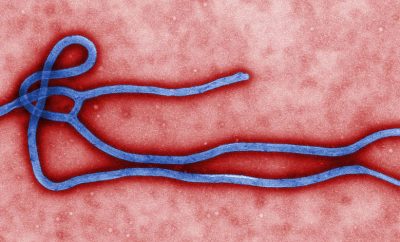 "one blemish" courtesy of waferboard; License: (CC BY 2.0)
"one blemish" courtesy of waferboard; License: (CC BY 2.0)
Health & Science
The Obesity Epidemic: What’s Behind One of America’s Largest Health Problems?
A recent study found that there has been a rise in insurance claims for obesity-linked illnesses, such as high blood pressure, type 2 diabetes, and sleep apnea. While the results of this study–completed by the nonprofit Fair Health, a national clearinghouse for claims data–is nothing new, it is one of the first to use actual claims data. This is important because claims data shows treatments actually rendered, which can help illustrate the medical costs associated with high obesity rates. Beyond the results of this specific study, though, the fact is that obesity has become a major problem in the United States for people of all ages. Read on to learn more about the American obesity epidemic, what is being done to fight it, and the outlook going forward.
Obesity in America
Obesity is a somewhat mysterious term, so it first bears clarifying. According to the Centers for Disease Control (CDC), a person is obese when his or her Body Mass Index is above 30 percent. BMI is calculated by dividing a person’s height by weight. A BMI above 40 percent is considered extreme or severe obesity. While BMI is a useful tool to help assess health on a basic level, it does not directly measure the amount of body fat a person has.
In 2014, 36 percent of adults in the United States were obese. According to estimates from 2008, obesity cost the nation approximately $147 billion for medical costs. On a more individual level, people who are obese spend $1,429 more on medical costs per year than people of normal weight. Not only does obesity have negative physical effects, but it can also have negative mental effects and lead to depression.
From a demographic perspective, obesity tends to affect certain groups more than others. Non-Hispanic black Americans have the highest age-adjusted rate of obesity, at 48.1 percent. They are followed closely by Hispanics and non-Hispanic whites. The group with the lowest rate of obesity by far is Asian Americans, who have an average obesity rate of just 11.7 percent, which is well below the national average. Additionally, while obesity is on the rise in many demographic groups, middle-aged adults still have higher rates of obesity at 40.2 percent than both older adults and young adults.
Continuing along this same path, for men, there is not much of a correlation between income or education level and obesity. The one exception being that black and Mexican-American men with higher incomes are more likely to be obese than lower income men in the same groups. For women, a more widespread correlation exists–higher income and better-educated women of all races are less likely to be obese than women from the opposite income and education groupings. Geographically, there is a lower prevalence of obesity in states in the West and Northeast of the United States, with those in the Southeast having the highest rates of obesity. The following gives an overview of the facts behind the obesity epidemic:
Factors behind the Obesity Epidemic
So what causes obesity and what led to its rise? While many people may point to a simple lack of self-control to explain the prevalence of obesity, in many cases it is much more complicated than that. One of the major issues is genetics, namely different people absorb, store, and process food differently, which can make them more likely to gain weight.
In the same vein, medical problems that lead to inactivity, such as arthritis, can also contribute to obesity. Similarly, certain medications taken for completely unrelated conditions, such as depression, can cause weight gain. Age and pregnancy can lead to obesity as well, with people’s metabolisms generally slowing down as they get older and some women having difficulty losing weight after giving birth.
In addition to the physical factors, there are also several environmental factors at play. These include access to a place to exercise, knowledge of healthy cooking, and even being able to afford healthy food. Quitting smoking can affect someone’s weight as well, although its potential negative health effects are generally outweighed by its positives. Even a change in sleep patterns can lead to significant weight gain, as they can lead to hormonal changes that affect how food is digested.
Sometimes there are things completely beyond a person’s control, an example being meals at restaurants, which today are four times larger on average than they would have been back in the 1950s. Along with quantity and size, the cost of food also plays an important role in the rate of obesity. Since the 1970s the cost of food as a portion of income has gone down. Nor is all food is created equal, and while all food has gotten relatively cheaper, unhealthy foods tend to cost even less than healthy alternatives such as vegetables. Even if you set aside how healthy cheap food is, the sheer availability of food makes being obese more likely. While factors such as poor diet, family lifestyle, and inactivity can lead to obesity, they are clearly not the only causes.
Efforts to Reduce Obesity
While determining the causes of obesity has been a challenge, actually reducing it has been particularly difficult. However, that failure is not for a lack of trying. The CDC funds programs at the state and local level in an effort to reduce obesity by advocating for a combination of healthy eating habits and an active lifestyle. The CDC’s High Obesity Program provides grants to universities in areas with a high prevalence of obesity that involve a targeted approach to address the issue. Several states and cities have also implemented a range of policies to address health concerns, ranging from taxes on soda and sugary drinks to school nutrition programs.
There are many resources outside the government as well, in the form of non-governmental organizations that are focused on combatting obesity. A number of these organizations–like the Obesity Action Coalition or TOPS Club, inc–echo their government counterparts, preaching that a combination of education, healthy eating, and physical activity is necessary to combat the obesity epidemic.
The accompanying video looks at ways to fight obesity:
Nevertheless, for all the energy these organizations, government and non-government alike, are exerting their efforts seem to be in vain. In fact, despite major efforts in research, clinical care, and the development of various programs to counteract obesity, after more than 30 years there are few signs that suggest the fight against the epidemic is succeeding. While the overall trend has not reversed itself, some targeted efforts have managed to bring about success at the community level.
Going Forward
Obesity is a major factor in predictions that for the first time children growing up today may not outlive their parents. That is because obesity rates and body weights, in general, have skyrocketed over the last 40 to 50 years. From 1962 to 2006 the obesity rate among Americans grew from 13.4 percent to 35.1 percent. The average person today weighs 26 more pounds than he or she would have in the 1950s. A 2005 study found that if obesity trends continue on their current path, the life expectancy gains from the past several decades could flatline or even go in the opposite direction.
This troubling news concerning obesity comes at an especially bad time. With rates already increasing, government programs that target obesity prevention, in particular, could lose federal money. One of the many aspects of the Affordable Care Act involved the creation of a Prevention and Public Health Fund, which provided resources to important prevention programs–including some obesity-related grants–and makes up a sizable portion of the CDC’s total budget. With Congress debating whether or not to repeal the law, such funding could be cut. More than 300 public health organizations signed on to a letter to congressional leaders asking them not to get rid of the fund in January.
Investing in these public health interventions is becoming more important now than ever, as estimates indicate that the obesity epidemic will continue to be a problem in years to come. Two different studies predict that the obesity rate could continue to rise to 42 to 44 percent by 2030.
While this is an American epidemic, and America has the highest percentage of obese people, the United States is not the only place feeling the burden. Roughly 30 percent of the world’s population, or 2.1 billion people, are either overweight or obese. This trend affects both developed and developing countries alike, however, it affects them in different ways. In developed nations, men have higher rates of obesity whereas women in developing countries have higher rates.
Regardless of demographics, though, obesity rates are increasing all over the world much like they are in the United States. Also, like in the United States, preventive measures to reduce obesity have mostly failed. It has gotten to the point now that regions outside of North America and the West actually have the highest rates. Currently, the Middle East and North Africa have the highest adult obesity rates in the world.
Conclusion
While obesity tends to affect certain groups more than others, overall obesity rates have increased significantly in the past several decades. While obesity rates have leveled off among American youth in the past 10 years, they have continued to climb for adults and remain at record highs for both. Unfortunately, many of the attempts to reverse these trends have had little success so far. This is extremely troubling as obesity has gone from a problem to an epidemic.
The impact from rising obesity rates has the potential to be disastrous. Obesity already costs the United States alone hundreds of billions of dollars annually. For nations that cannot afford this level of care, obesity could lead many people to develop obesity-related diseases and complications without any way to treat or address them. While most efforts have failed to reverse the trend, some targeted interventions have been effective. Ultimately, the problem will need to be addressed at a larger scale for rates to decline.








Comments